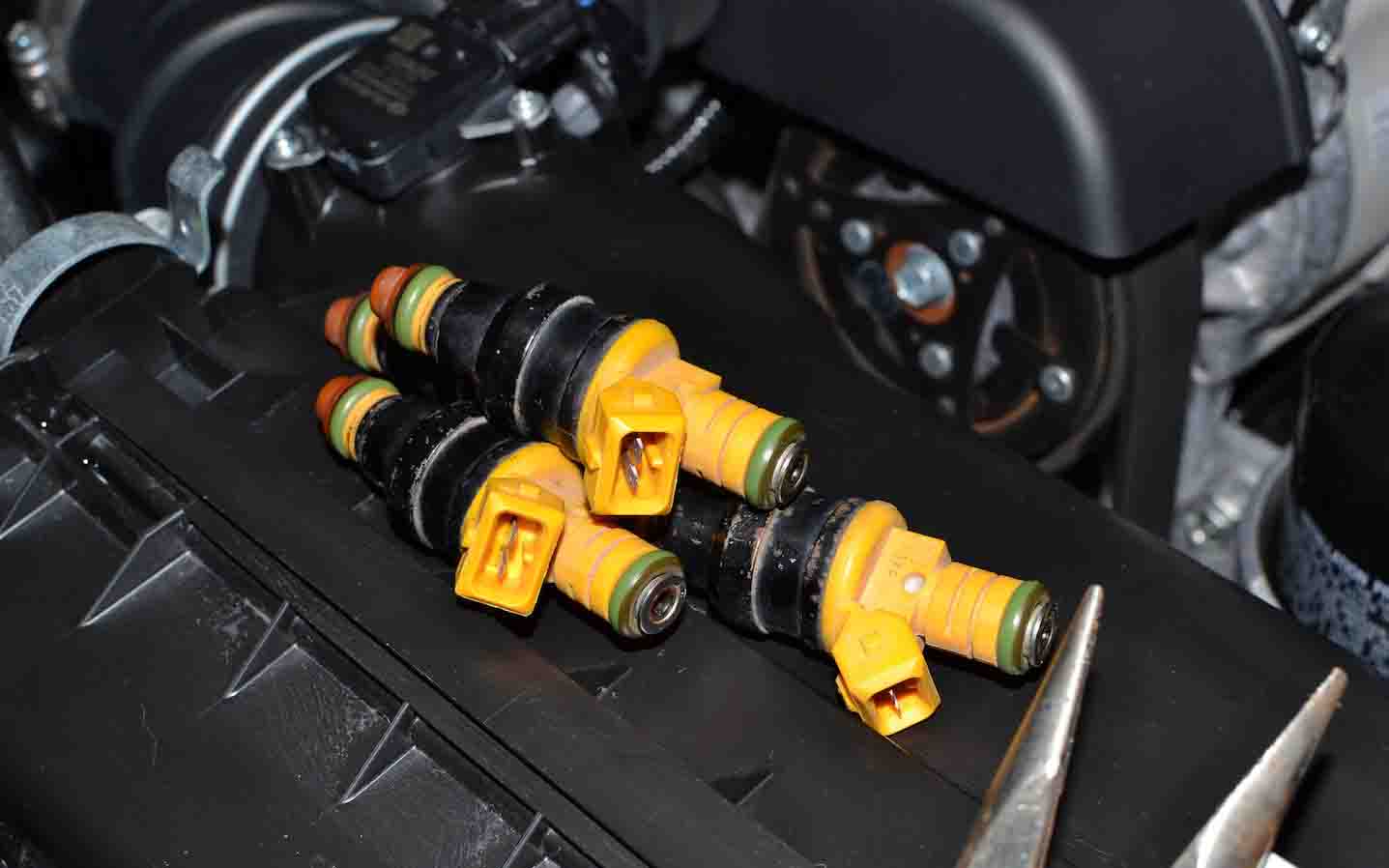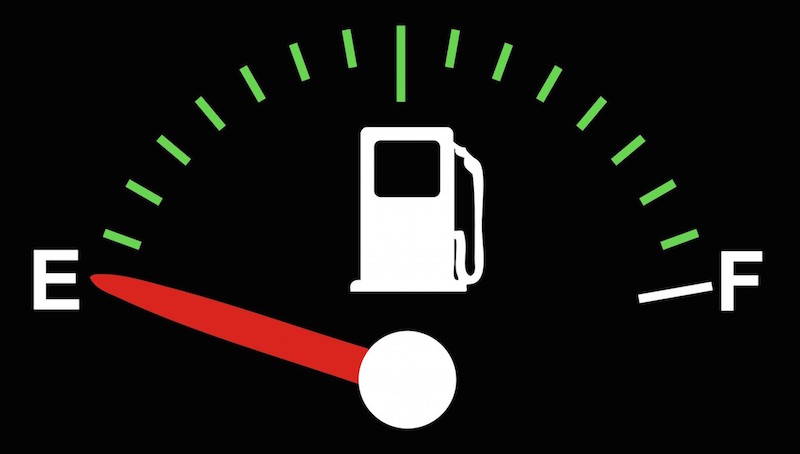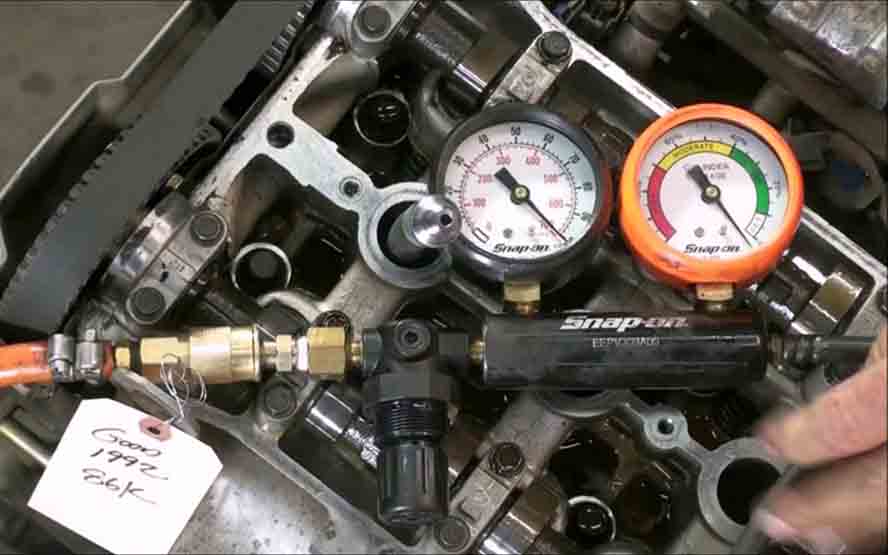
Over time, sediment and rust accumulate in the fuel tanks of older vehicles. Sure, fuel filters do their job, but if they're not changed often enough (or ever!), the tank could use a thorough cleaning. After all, any vehicle that's been sitting for even a few months will have problems with condensation in the tank, which will lead to corrosion (in a metal gas tank, at least). This is often one of the first tasks you'll have to do if you buy a vintage car for a restoration project, or if you buy a vehicle that's been sitting for some time.
Next time you're tending to maintenance work under the body of the vehicle like replacing the fuel pump, and have the fuel tank removed, give it a thorough cleaning to help extend the life of your engine.
This is a challenging and technical project
- When working around fuel, or any combustible material, keep a fire extinguisher nearby and properly ventilate the work space to avoid inhalation of fumes. Wear safety goggles, a respirator mask, and safety gloves.
- Do not smoke or allow anyone in the work space to use an open flame or tool that creates a spark, such as a propane torch, space heater, or welding tools.
- Dispose of all waste fuel and fuel-soaked rags according to the hazardous waste disposal guidelines set by your city. Never dump fuel into a public sewer system or place fuel-soaked cloth items in a sealed garbage can.
-
Put on safety gear, including goggles, gloves, and a respirator mask. Ventilate your workspace by opening windows or doors.
-
Place the fuel tank on a solid, level surface, such as driveway, shop floor, or garage floor.
-
Use a portable vacuum nozzle and pressurized air to remove road dirt from the exterior of the fuel tank. Inspect all parts for cracks, holes, or breaks and patch small holes or replace damaged parts. After your fuel tank is completely drained of fuel and fumes, you can try soldering any holes or cracks in the tank.
-
Use a screwdriver to loosen and unhook the fuel lines and lock ring from the top of the fuel pump module.
-
Remove the fuel pump by gently twisting left and right, then lifting straight up, pulling it from the open cavity of the fuel tank. Be sure to check the repair manual for your vehicle's specific instructions on how to do this properly.
-
Tip the base of the fuel pump up to avoid spilling fuel. Be mindful of the narrow fuel rod below, so it doesn't get caught on the opening the fuel tank during removal of the fuel pump.
-
Place the fuel pump in an oil-drip pan and set it aside until re-installation after cleaning the fuel tank. Or, dispose of the pump if you're replacing the part.
-
Loosen the clamps on the fill hose and remove the hose from the tank. Pour the fuel from the exposed opening into an approved gasoline can using a funnel. If necessary, use a siphon to remove any remaining fuel in the fuel tank.
-
Use a shop rag to dry the opening in the fuel tank and absorb any lingering fuel in the tank.
-
Aim the end of a pressurized air nozzle into the fuel tank to finish drying out the inside. A shop-vac on the reverse setting can be useful here, since it blows such a high volume of air.
-
Add a fuel system cleaner to the opening in the fuel tank. Be sure the cleaner covers the entire interior by rocking and tipping the tank as needed. Focus on the bottom where most rust and sediment collect.
-
Spray the interior of the fuel tank with a garden hose equipped with a pressurized nozzle. Aim in all directions to loosen rust and debris.
-
Reach into the fuel tank with a lint-free shop rag and gently scrub the interior of the fuel tank to further loosen dirt and rust.
-
Tip the fuel tank to the side and drain the water and fuel system cleaner into a shop-approved drain or collection pan. Dispose of the waste according to your city's waste water regulations.
-
Dry the interior of the fuel tank with clean, dry shop rags, and pressurized air. Let the fuel tank sit for an additional hour (at least) to air dry so lingering moisture can evaporate.
-
Reinstall the fuel pump (replace the fuel filter first, if needed), lock ring, and fuel lines. Ensure all valves, caps, and hoses are secure, then attach the fuel tank to the car body.
-
Remove the gas cap on the exterior of the car and pour fuel into the gas tank. Include a fuel additive to clean the fuel injector or carburetor, combustion chambers, fuel lines, and intake valves. You're ready to get back on the road!
How do you keep your fuel system clean and engine running smoothly? Share your ideas in the comments below.






